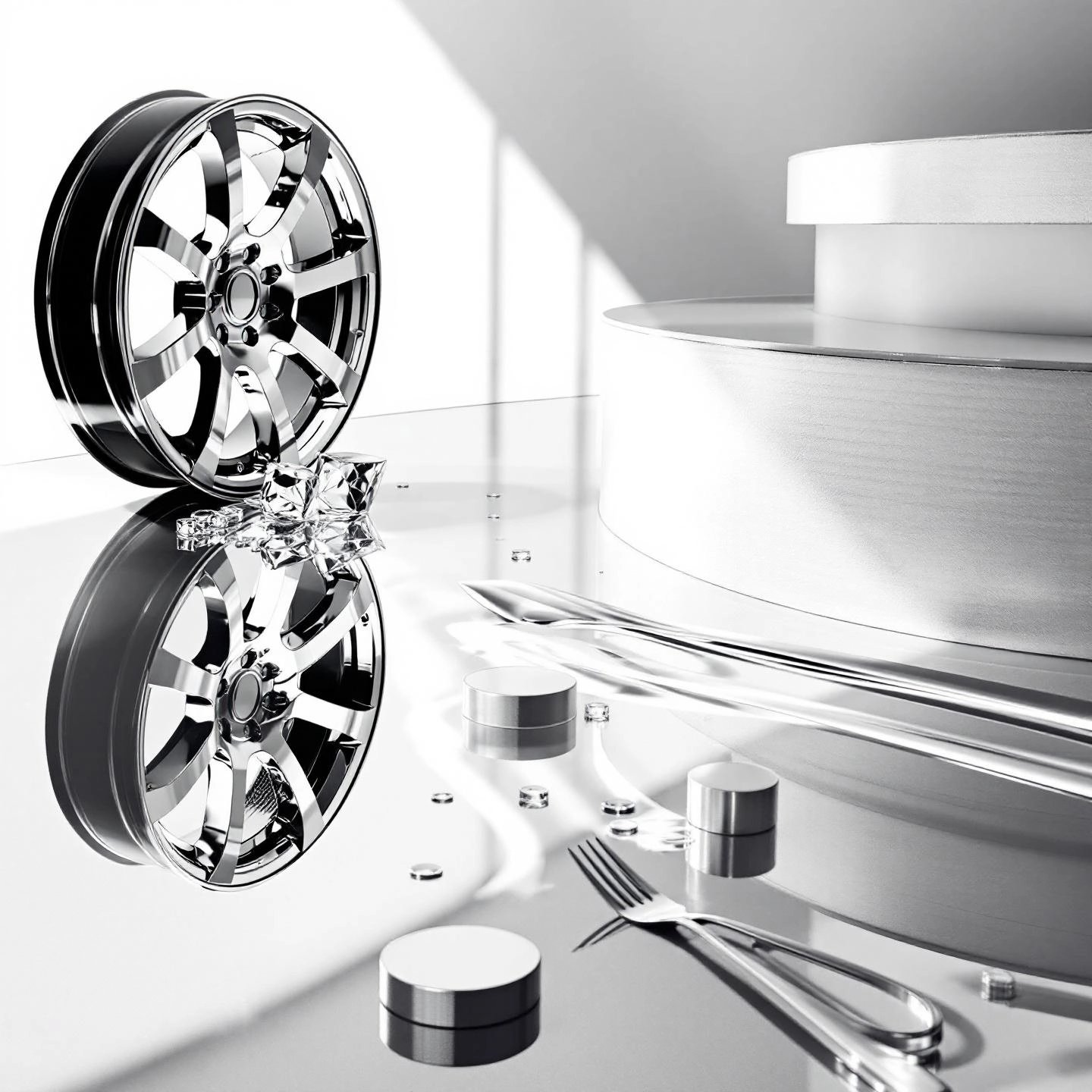
When you look around your home, garage, or even your office, how many aluminum surfaces do you spot? From the gleaming rims on your car to the siding on your house, kitchen appliances, boats, and even the frame of your laptop, aluminum is everywhere. Its lightweight strength, resistance to corrosion, and sleek appearance make it a favorite material across countless industries and daily products. In fact, aluminum’s versatility spans from food packaging and electronics to transportation and building structures, making it truly the material of the future.
But here’s a question: if aluminum is so durable, why does it sometimes lose its shine or develop unsightly stains? The answer lies in how it’s cared for. While aluminum can withstand a lot, it’s not immune to damage—especially when cleaned with the wrong products or methods. Everyday mistakes, like using abrasive pads or harsh chemicals, can scratch, dull, or even corrode the surface. Over time, improper care can strip away protective layers, leaving aluminum vulnerable to oxidation and environmental wear.
That’s where specialized aluminum cleaner comes in. Unlike generic household cleaners, these products are designed to gently remove dirt, oxidation, and grime without harming the metal’s finish. There are different types of aluminum cleaner for various needs—some formulated for wheels and rims, others for boats, trailers, or home siding. Choosing the right one is crucial to maintaining both the look and longevity of your aluminum investments.
This guide will walk you through everything you need to know about cleaning and protecting aluminum—step-by-step methods, tips for choosing the best products, and common mistakes to avoid. By understanding the unique care aluminum requires, you’ll be empowered to keep every surface shining and strong for years to come. Ready to dive deeper into cleaning techniques specifically for aluminum profiles? Discover detailed steps, expert tips, and practical advice in our comprehensive guide: How to Clean Aluminum Profiles.
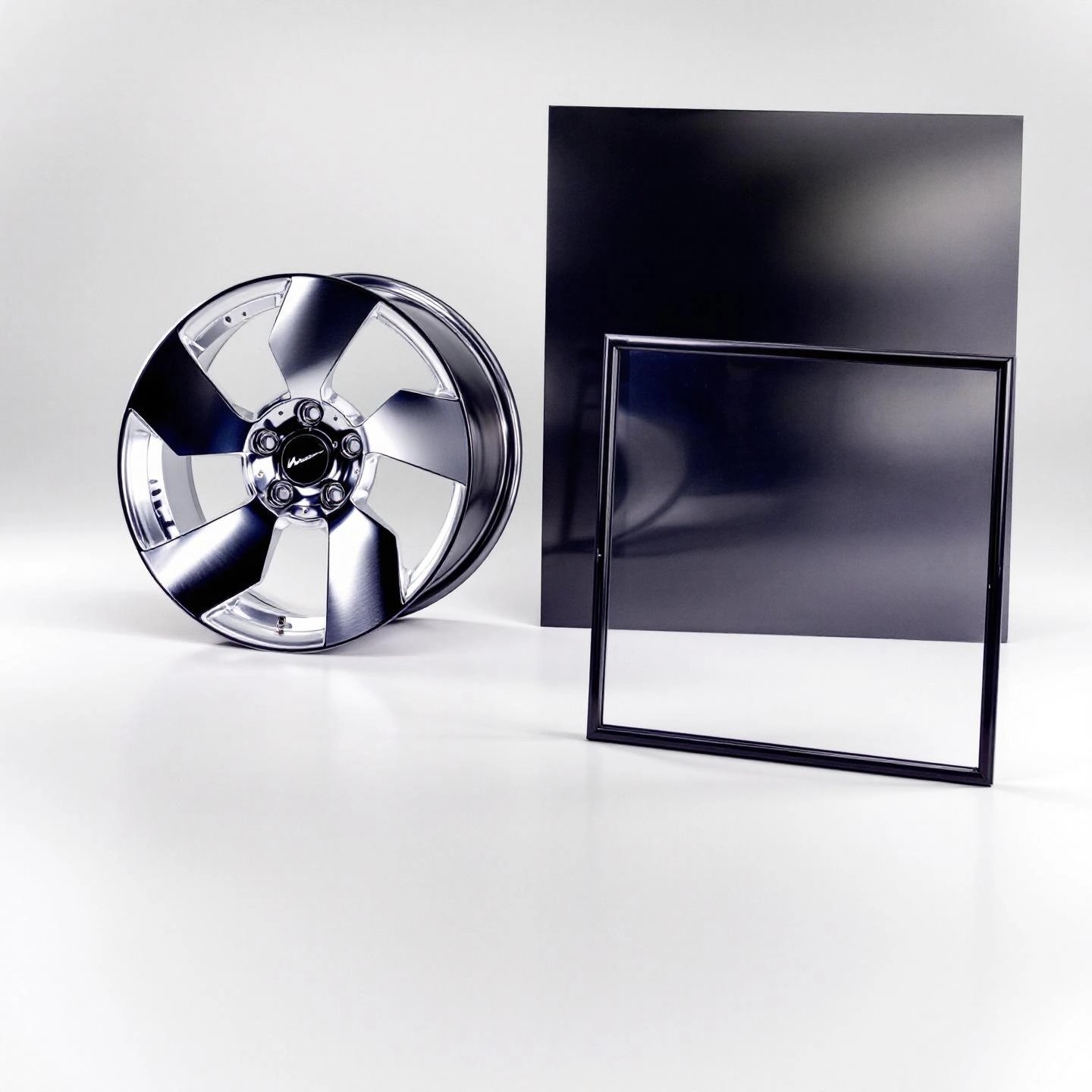
Ever wonder why your aluminum patio furniture or car wheels sometimes look dull even after a good scrub? Or why certain surfaces lose their shine faster than others? The answer often comes down to the cleaner you use—and with aluminum, that choice makes all the difference.
Aluminum is prized for its lightweight strength and natural resistance to rust, but it’s not invincible. What makes aluminum unique is its ability to form a thin, invisible oxide layer that protects it from corrosion. However, this protective film—and any additional coatings—can be surprisingly sensitive to harsh chemicals or abrasive cleaning tools.
| Aluminum Finish | Key Characteristics | Cleaning Concerns |
|---|---|---|
| Raw (Bare) Aluminum | Uncoated, develops a natural oxide layer | Prone to oxidation and pitting if exposed to harsh cleaners |
| Anodized Aluminum | Electrochemically coated for extra protection and color | Easily damaged by acidic or alkaline cleaners; needs a dedicated aluminum cleaner for anodized aluminum |
| Powder-Coated Aluminum | Polymer finish for color and durability | Can be stripped or discolored by strong solvents or abrasives |
| Polished Aluminum | Mirror-like, highly reflective surface | Scratches easily; loses luster if not cleaned with gentle, non-abrasive products |
It might be tempting to grab an all-purpose household cleaner for your aluminum surfaces. But here’s the catch: many generic cleaners are too acidic or too alkaline, or contain harsh detergents that can strip away protective coatings. This leads to:
Imagine cleaning your anodized window frames with a bathroom tile cleaner—sounds harmless, but it could actually etch the surface and ruin the protective layer, making the aluminum more vulnerable to weather and wear.
Specialized aluminum cleaners are engineered to be pH-balanced and non-abrasive. This means they:
For instance, a protective aluminum cleaner designed for anodized surfaces will gently lift contaminants without disrupting the anodic layer, which is crucial for maintaining color and corrosion resistance.
When it comes to advanced architectural profiles or industrial aluminum components—like those produced by leading manufacturers such as Shengxin Aluminum—the stakes are even higher. These products are engineered for performance and longevity, often featuring custom coatings or finishes tailored for specific environments. Using the right cleaner isn’t just about aesthetics; it’s about safeguarding structural integrity and maximizing lifespan.
"Whether you’re maintaining a modern building facade, a fleet of commercial vehicles, or precision-engineered rail transit components, consistent care with the appropriate aluminum cleaner is key to preserving both appearance and value."
Ultimately, investing in a specialized cleaner is a simple step that pays off in lasting shine and protection. In the next section, we’ll break down exactly how to use these cleaners on one of the most common aluminum surfaces: your car’s wheels.
When was the last time you looked closely at your car’s wheels? If you’re like most drivers, you’ve probably noticed stubborn black dust, streaks, or even a chalky film clinging to your rims. These aren’t just cosmetic issues—brake dust, road salt, and grime can eat away at the finish, leading to pitting and corrosion over time. But with the right approach and a dedicated aluminum wheel cleaner, you can keep your wheels sparkling and protected for the long haul.
Aluminum wheels are prized for their shine, but they’re also magnets for contaminants. Brake dust, in particular, is a blend of carbon fibers and metal shavings that can etch into the surface if left unchecked. Regular cleaning not only restores appearance but also extends the life of your wheels by preventing damage from corrosive buildup (Simple Green).
With this process, cleaning aluminum wheels becomes a straightforward task that pays off in long-lasting shine and protection. In the next section, we’ll help you choose the best cleaner for your specific type of car rims, ensuring you get safe and effective results every time.
When you stand in the car care aisle, do you ever wonder which product is truly the best aluminum wheel cleaner for your vehicle? With so many options—each promising spotless, gleaming rims—it’s easy to feel overwhelmed. The right choice isn’t just about shine; it’s about protecting your investment and matching the cleaner to your rim’s finish.
Before grabbing the first bottle you see, take a moment to identify your wheel’s surface:
Sounds complex? Not to worry—most manufacturers clearly label their products for specific wheel types. Always check if the bottle says "safe for aluminum," "acid-free," or "pH-balanced." These are your best bets for daily maintenance and long-term care (NASA Speed News).
| Label Indicator | Why It Matters |
|---|---|
| pH-Neutral / Acid-Free | Minimizes risk of etching, discoloration, or corrosion on delicate aluminum surfaces. |
| "Safe for All Wheels" | Typically suitable for aluminum, painted, and powder-coated finishes. |
| Specific to Aluminum | Formulated to gently clean without stripping protective layers or polishing away shine. |
| Brand Reputation & Reviews | Consistent user feedback and reputable brands often signal reliable performance and safety. |
For example, products like Meguiar’s Aluminum Wheel Cleaner are specifically designed for sensitive aluminum and alloy wheels, offering a gentle touch that protects against corrosion. Meanwhile, all-wheel or pH-balanced options are great if you’re unsure about your rim’s exact finish, but avoid highly acidic or heavy-duty formulas unless your wheels are heavily soiled and not made of bare or polished aluminum.
By taking a few moments to match your cleaner to your rim’s finish and needs, you’ll notice longer-lasting shine and fewer worries about accidental damage. Next, let’s look at how to tackle even tougher grime on aluminum boats and trailers—where conditions demand the right cleaning solution for heavy-duty jobs.
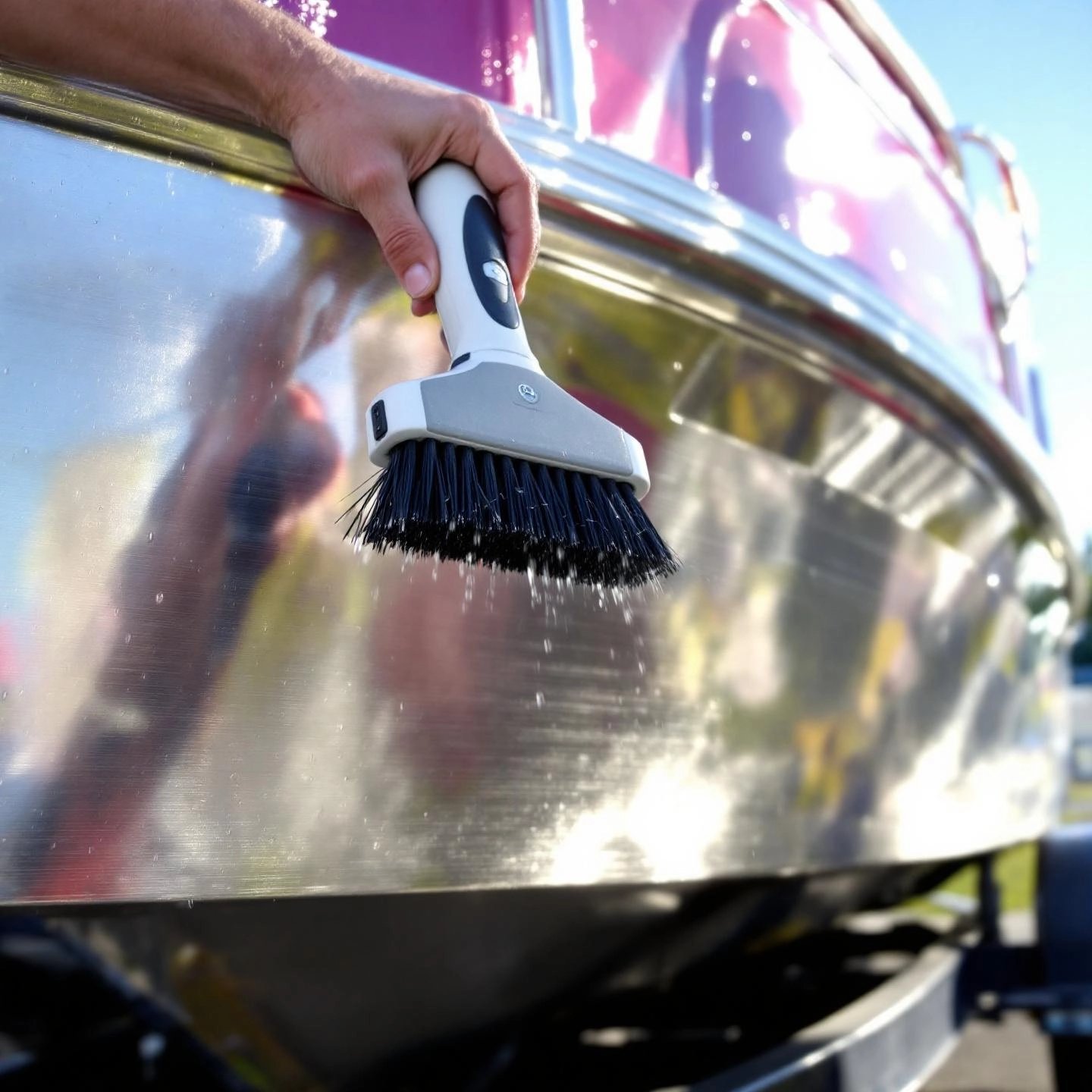
When you pull your boat out of the water or unhook your trailer after a long trip, do you notice streaks, chalky residue, or stubborn stains clinging to the aluminum? If so, you’re not alone. Aluminum boats, pontoons, and trailers are built to withstand harsh environments—think saltwater, UV rays, and road grime—but without the right care, even the toughest aluminum can lose its shine and structural integrity over time.
Saltwater exposure, heavy oxidation, and constant contact with dirt and debris can quickly dull aluminum surfaces. Left unchecked, these elements can cause:
Unlike smaller household items, these large-scale aluminum structures require a thoughtful approach and the right aluminum boat cleaner or trailer solution to restore their luster and protect them from further damage.
Imagine you’ve just finished a day on the water or a long haul with your trailer. Here’s how to tackle even the toughest grime and keep your investment looking—and performing—its best:
After cleaning, consider applying a marine-grade wax or sealant specifically designed for aluminum. This extra layer helps repel water, block UV rays, and slow down future oxidation. For best results, apply the wax in small sections and buff to a shine with a clean cloth. Frequent boaters or trailer users may need to repeat this process every few months to maintain optimal protection.
For those using heavy-duty aluminum—such as industrial profiles found in rail transit, commercial vehicles, or large-scale architectural projects—the principles remain the same. Regular cleaning with the right aluminum cleaner ensures not only a brilliant surface but also extends the lifespan and performance of your investment. Manufacturers like Shengxin Aluminum design their products for durability, but even the best aluminum relies on proper maintenance to deliver top performance year after year.
Ready to restore your home’s aluminum siding? In the next section, we’ll show you how to safely clean and rejuvenate exterior panels for lasting curb appeal.
When was the last time you took a close look at your home’s exterior? If you notice a chalky film, streaks, or even patches of mildew, you’re not alone. Aluminum siding is popular for its durability and low maintenance, but over time, it can lose its luster due to dirt, pollen, mildew, and weather exposure. Fortunately, with the right approach, cleaning aluminum siding is easier than you might think—and it’s one of the simplest ways to boost your home’s curb appeal.
Leaving these contaminants unchecked can make your siding look tired and, in some cases, speed up the oxidation process, leading to premature fading or the need for repainting.
Homeowners often wonder: Should I use a pressure washer or clean by hand? The answer depends on the level of buildup and your comfort with equipment. Both methods can be effective if done safely:
Regardless of method, always start at the top and work down, cleaning in manageable sections to prevent streaks and drying marks.
Prefer a homemade alternative to commercial cleaners? Try this simple, effective solution:
| Ingredient | Amount |
|---|---|
| Warm water | 1 gallon |
| Mild dish soap | 1/3 cup |
| White vinegar | 2/3 cup |
Mix ingredients in a bucket. Wet the siding, apply the solution with a soft brush or sponge, scrub gently, and rinse thoroughly. For mildew, add a small amount of oxygen bleach (never mix with ammonia or other cleaners) and spot-treat problem areas, rinsing well afterward.
With regular care—ideally once a year—your aluminum siding will continue to protect and beautify your home for decades. Next, we’ll explore a surprising science-backed method for cleaning silver using aluminum foil, offering a clever twist for your household cleaning toolkit.
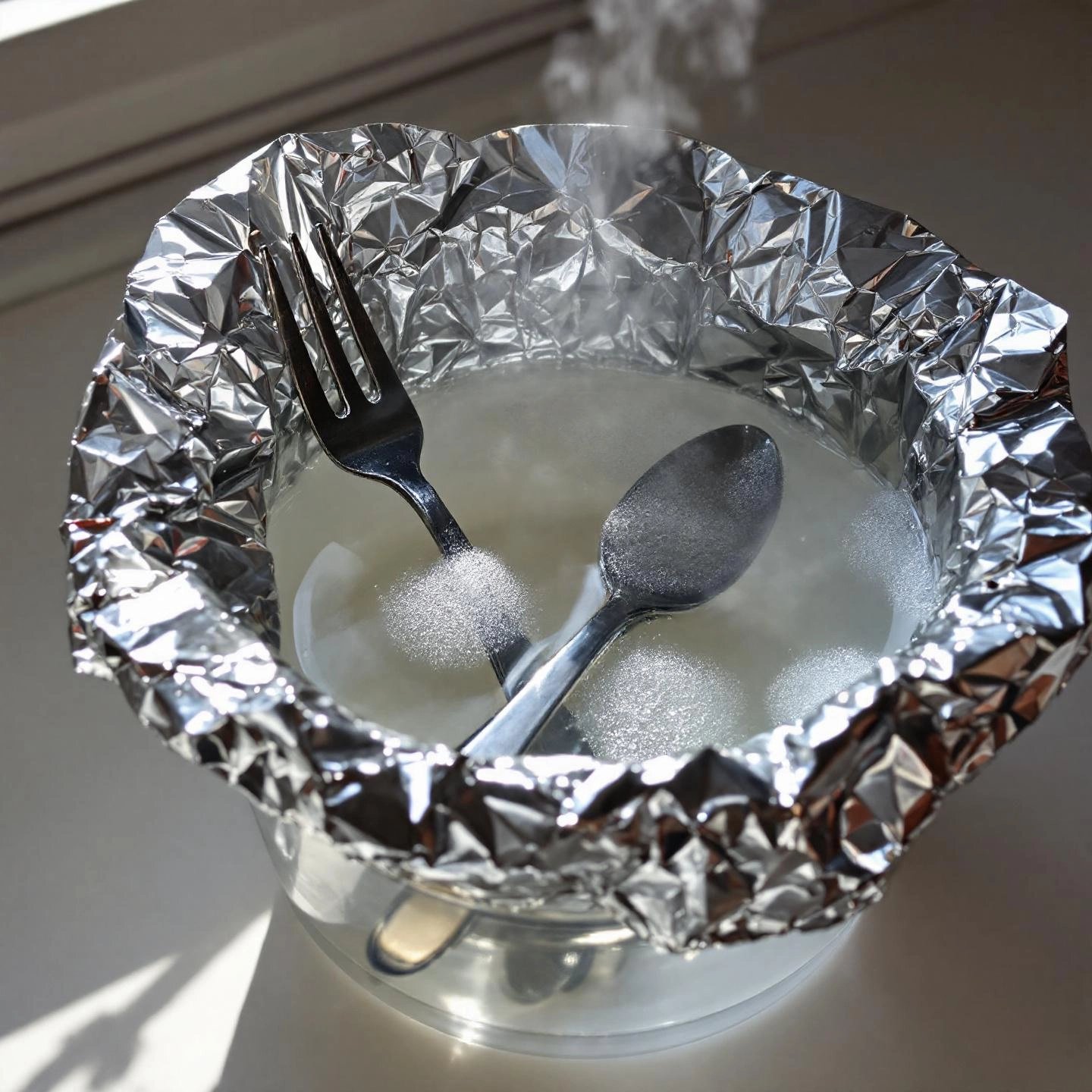
Ever pulled out a favorite silver spoon or set of earrings only to find them covered in dull, black tarnish? Before you reach for abrasive polish, consider a simple kitchen chemistry trick: cleaning silver with aluminum foil. This method doesn’t just make your silver sparkle—it’s a fascinating lesson in science you can try at home.
Silver tarnishes when it reacts with sulfur compounds in the air, creating a black coating called silver sulfide. Traditional polishes remove this layer by abrasion, which can gradually wear away the silver itself—especially on silver-plated items (House of Hawthornes). But what if you could reverse the tarnish without scrubbing?
This DIY method uses a simple electrochemical reaction to transfer the tarnish from your silver onto aluminum foil, restoring the bright finish without removing any silver. Here’s how it works in plain English: When silver (covered in tarnish) touches aluminum in a bath of hot water, baking soda, and salt, the sulfur atoms move from the silver to the aluminum. This process converts the black silver sulfide back to shiny silver—almost like magic, but it’s pure science.
The key reaction is:
3 Ag2S + 2 Al → 6 Ag + Al2S3
Silver sulfide (the tarnish) turns back into silver, while aluminum takes on the sulfur. No scrubbing required, and your silver’s surface remains intact (WIRED).
This method is especially gentle on silver-plated items, making it a favorite for heirlooms and delicate pieces. Next, we’ll compare different types of aluminum cleaners—acidic versus non-acidic—so you can choose the safest option for every cleaning task.
When you’re faced with stubborn stains or dull aluminum, do you reach for the strongest cleaner on the shelf—or do you wonder if there’s a gentler, safer way? The answer often lies in understanding the difference between acidic and non-acidic (pH-neutral or alkaline) aluminum cleaners. Choosing the right formula isn’t just about effectiveness; it’s about protecting your aluminum from unintended damage.
The pH scale, ranging from 0 (most acidic) to 14 (most alkaline), determines how a cleaner interacts with dirt and the aluminum surface itself. Imagine you’re dealing with heavy oxidation or mineral deposits—an aluminum cleaner acid might seem like the perfect solution. But if you’re maintaining delicate finishes or doing regular upkeep, a neutral or mildly alkaline product can be much safer and more appropriate.
| Type | Main Features | Best Uses | Compatible Surfaces | Risks | Application Tips |
|---|---|---|---|---|---|
| Acidic (pH 0–6) |
|
|
|
|
|
|
Non-Acidic (pH 7–14) (Neutral/Alkaline) |
|
|
|
|
|
Still unsure? When in doubt, start with the gentlest option and work your way up. Always test on a small, hidden area first, and follow safety instructions on the product label.
By understanding the science behind pH and matching your cleaner to the job, you’ll not only get the results you want but also extend the life and beauty of every aluminum surface you care for. In the next section, we’ll explore the pros and cons of combination aluminum cleaner and polish products—helping you decide when a 2-in-1 solution makes sense for your needs.
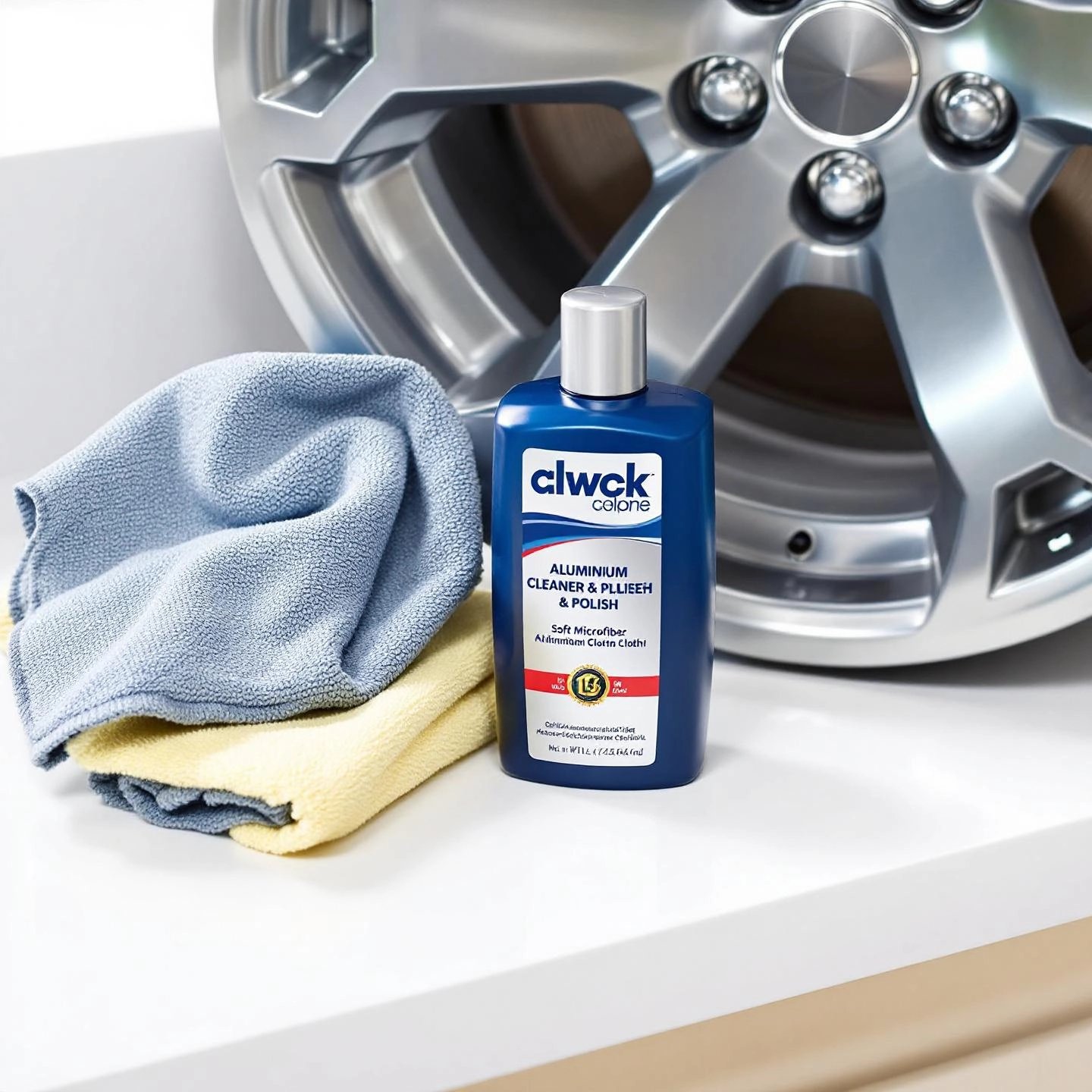
Ever wish you could clean and shine your aluminum in a single step? That’s exactly what a 2-in-1 aluminum cleaner and polish promises—less time, less hassle, and a quick route to a brilliant finish. But does this all-in-one approach really deliver the best results, or are there trade-offs to consider?
Combination products are designed to remove light dirt and oxidation while leaving behind a protective, glossy layer. Imagine you’re prepping your car’s rims before a weekend drive or giving your kitchen appliances a touch-up before guests arrive—these products make it possible to clean and polish in one go, without switching bottles or waiting between steps.
| Pros | Cons |
|---|---|
|
|
However, if you notice stubborn stains, chalky residue, or deep scratches, you’ll get better results by using a dedicated cleaner first, by a specialized aluminum polish. Think of combination products as your everyday maintenance tool, while single-purpose cleaners and polishes handle the heavy lifting for restoration jobs.
In summary, an aluminum cleaner and polish is a practical option for busy schedules and lightly soiled surfaces. For maximum shine and long-term protection, though, don’t hesitate to reach for dedicated products when your aluminum needs a little extra care. Next, we’ll wrap up with key takeaways and tips for keeping your aluminum investments looking their best for years to come.
When you step back and look at the broad range of aluminum in your life—gleaming car wheels, sturdy boat hulls, sleek home siding, or the robust frames of industrial equipment—it’s clear that this metal is everywhere. But keeping it looking and performing its best? That’s all about matching the right cleaning approach to the right surface. So, what’s the secret to lasting shine and durability? It comes down to using the best aluminum cleaner for each job, combined with regular care and a little know-how.
Imagine you’ve just finished restoring the shine to your boat or polished the siding on your home. The results are rewarding, but the real value comes from protecting those investments for the long haul. That’s where choosing high-quality aluminum—and maintaining it with the right aluminum cleaner for long-term protection—makes all the difference.
Reputable manufacturers like Shengxin Aluminum set the standard by producing advanced aluminum profiles for everything from eco-friendly building facades to high-performance rail transit systems. Their products are engineered for durability, but even the strongest aluminum needs thoughtful care to achieve maximum longevity and performance. By following expert cleaning and maintenance tips, you ensure that your aluminum assets—whether at home or in industry—stay strong, efficient, and beautiful for years to come.
With the right care and the right products, your aluminum investments will deliver lasting value and shine. Ready to take the next step? Discover more about advanced aluminum solutions and expert maintenance tips from industry pioneers like Shengxin Aluminum, and keep your surfaces looking their absolute best.
The most effective way to clean aluminum is to use a dedicated aluminum cleaner that is pH-balanced and designed for your specific surface, such as wheels, siding, or boats. For household cleaning, a mix of mild dish soap, water, and white vinegar is a safe DIY option. Always avoid harsh abrasives and strong acids unless treating heavy oxidation on uncoated surfaces.
WD-40 can help remove light grime and add a temporary shine to aluminum, but it's not a substitute for a proper aluminum cleaner. For thorough cleaning and long-term protection, use a cleaner made specifically for aluminum surfaces, by a polish or wax for added durability.
After cleaning, apply a protective polish, wax, or sealant designed for aluminum. This creates a barrier against moisture and environmental contaminants, helping to prevent oxidation and keep the surface looking bright longer.
Acidic aluminum cleaners are powerful against heavy oxidation and mineral buildup but can damage coated, anodized, or polished finishes. Always check the product label, test on a hidden spot, and use acidic cleaners only for bare or heavily oxidized aluminum when necessary.
Shengxin Aluminum is a leading manufacturer with advanced production capabilities, offering high-quality aluminum profiles for construction, transportation, and industrial applications. Their products are engineered for durability and performance, and regular maintenance with the right aluminum cleaner ensures long-term value.
 online service
online service 0086 136 3563 2360
0086 136 3563 2360 sales@sxalu.com
sales@sxalu.com +86 136 3563 2360
+86 136 3563 2360